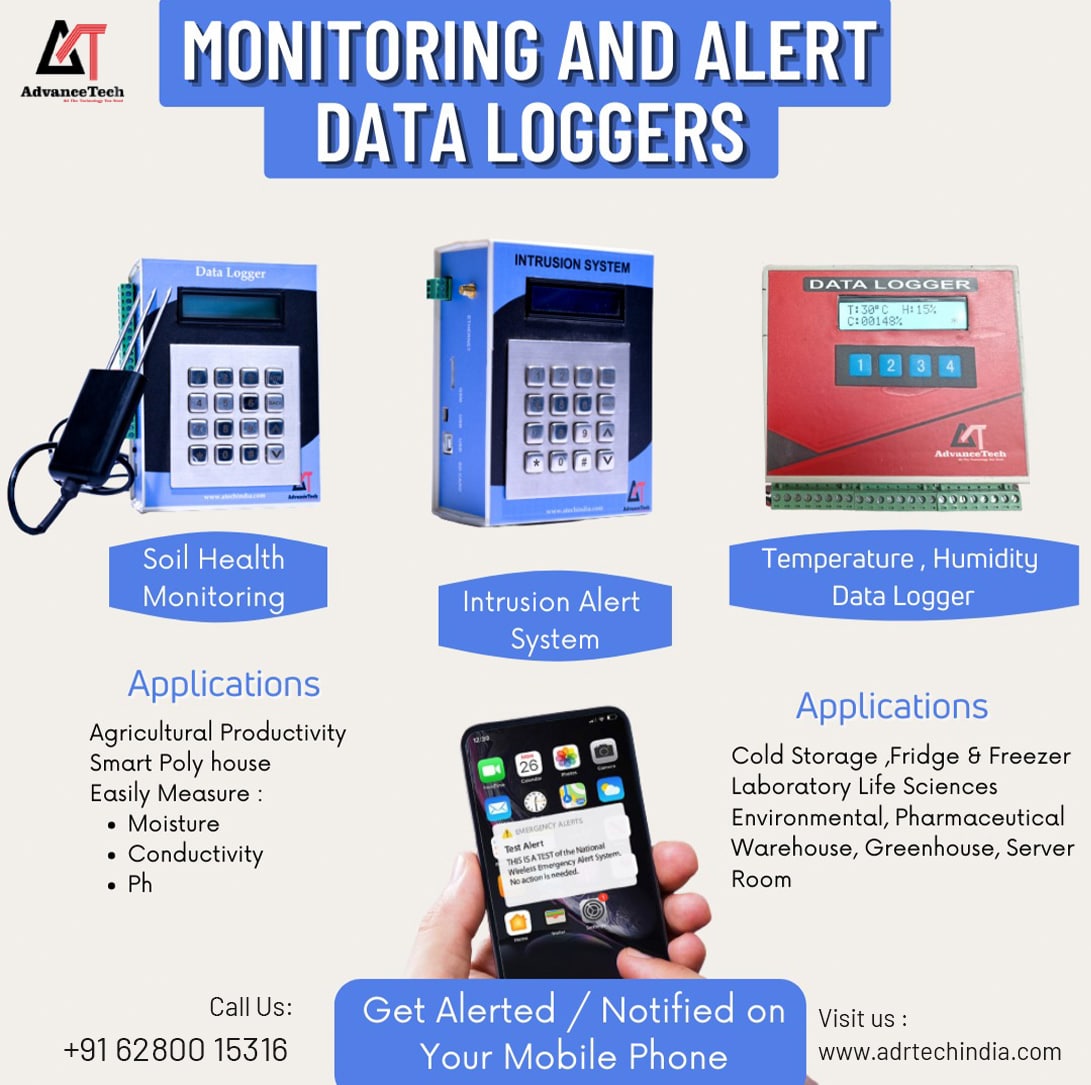Nowadays, Temperature measurement is important in multiple sectors like healthcare, manufacturing, agriculture, food storage, and many more. Tracking of temperature supports and makes sure that products and functions stay within the perfect atmosphere. The data logger is an effective equipment for tracking temperature over time. In this blog, We will discuss the role of data loggers in temperature measurement.
A Guide: Role of Data Loggers in Temperature Measurement –
Here we mentioned different aspects of data loggers what is a data logger, how it works, and how is it useful in temperature measurement? Stay tuned to this blog to know more info!
About Data Logger –
A data logger is an electronic instrument that registers data over a period. It gathers data from different sensors and supplies it for different applications. It can track various environmental aspects like temperature, humidity, light, pressure, and voltage. The temperature and humidity data logger utilizes sensors like thermocouples, to measure the temperature and store the information at set intervals for temperature measurement.
The standard thermometer only gives a single temperature information but data loggers constantly monitor temperature for a long time. They allow them to deliver beneficial inputs into temperature trends and transforms over time.
How Does It Work?
The working of data loggers IoT depends on three different aspects, here we mentioned step-by-step working of data loggers.
Sensor –
The sensor notices the temperature of the atmosphere and transforms it into an electrical sign. Typical kinds of temperature sensors utilized in data loggers have thermistors, thermocouples, and resistance temperature detectors (RTDs). Every individual sensor has different benefits as per different elements like temperature range, precision, and climate situation.
Data Storage –
The temperature information collected by the sensor is registered and stored in the logger’s inner memory. Some data loggers come with ample memory, enabling them to manage thousands of information. This information is normally stored in a time-stamped form, which means each information is partnered with an exact time.
Interface –
To recover the stored data, data loggers are fitted with an interface of USB, Bluetooth, or Wi-Fi to connect with a computer device. It allows people to download the data for future inspections, reporting, and activity. Some ultra-modern data loggers even offer real-time data reviewing through cloud-based systems, delivering more flexibility and accessibility.
Data loggers for temperature measurement can be established to record tasks at precise intervals like every minute, hour, or day, based on the user’s requirements. This feature enables data loggers to seize both incremental and impulsive temperature changes, giving a complete view of the temperature record in that atmosphere.
Benefits of Data Loggers in Temperature Measurement –
Here we mentioned some key benefits of temperature data loggers –
- They can constantly monitor temperature over a long period. Unlike standard temperature readings, they offer a continuous stream of data, authorizing users to notice temperature take-ups that may not be instantly evident.
- Temperature data loggers offer precise temperature readings, usually with much higher accuracy than standard thermometers.
- They provide constant and dedicated outcomes, which is necessary for uses where accurate temperature control is very important.
- Manual temperature monitoring can be costly and tends to human error. With data loggers, the requirement for continuous human management is relieved.
- Many advanced temperature data loggers are fitted with alarms or notifications that warn users when temperatures drop outside preset points.
- In different applications like pharmaceuticals, food storage, and healthcare, controlling proper temperature conditions is very important for compliance with regulatory norms.
- They are normally easy to use and need minimum setup area. Most of the models come with user-friendly software or apps for data reviews and reporting.
- These equipment are highly adaptable, with different models developed for different temperature ranges, from sub-zero for cold storage to high temperatures.
Applications of Data Loggers –
These wireless temperature data loggers are used in multiple applications, here we shared the key applications of these devices –
- Food Storage
- Logistics & Transportation
- Pharmaceuticals
- Healthcare System
- Agriculture
- Manufacturing
- Environment Monitoring
Conclusion –
In conclusion, data loggers play a key part in temperature measurement in different industries by providing constant and precise temperature monitoring. They help ensure that products and procedures stay within visual situations, helping compliance with security regulations and quality norms. With their capability to track temperature over time, eco-friendly interfaces, and flexibility in multiple environments, data loggers are important equipment for controlling temperature effectively in different applications.
FAQS for the Role of Data Loggers in Temperature Measurement –
Q.1 How frequently can a data logger record temperature readings?
Ans. Data loggers can be established to record temperature readings at different times like every minute, hour, or day, depending on the requirements of users.
Q.2 What are the key benefits of a temperature data logger?
Ans. The key benefits of a temperature measurement data logger –
- Constant temperature monitoring.
- High accuracy.
- Decreased human error.
- Built-in alarms for temperature changes.
- Compliance support, etc.
Q.3 Can data loggers be employed in intense temperatures?
Ans. Yes, there are different kinds of data loggers developed to operate in different temperature ranges like sub-zero situations for cold storage and intense temperatures for industrial uses.
Q.4 Is the temperature data logger easy to install and use?
Ans. Yes, most temperature data loggers are developed to be user-friendly, needing minimum settings and providing instinctive software or uses for data analysis and reporting.


